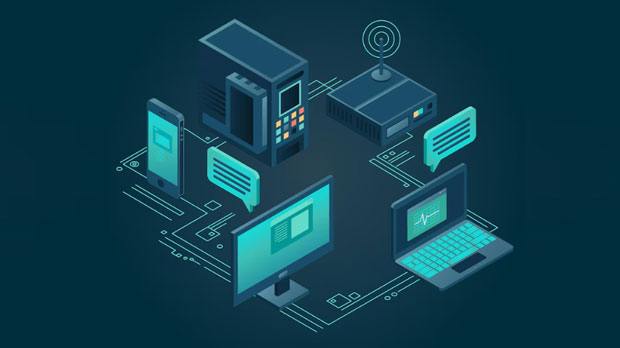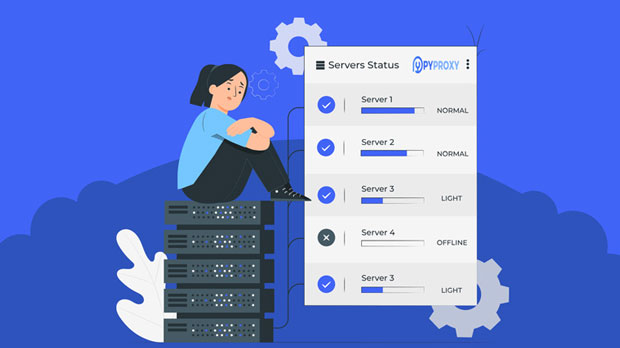When discussing online torrent downloading, especially from platforms like KickAssTorrent, stability is crucial for a seamless experience. One of the methods used by many users to enhance their browsing and downloading experience is through HTTP proxies. But how does an HTTP proxy impact the stability of downloading torrents? This article provides an in-depth analysis, addressing both the advantages and limitations of using HTTP proxies in torrent downloading. It explores how they work, their effectiveness, potential issues, and whether they can provide the necessary reliability for uninterrupted downloading. Understanding these aspects can help users make informed decisions when using HTTP proxies for torrenting. What is an HTTP Proxy?An HTTP proxy is a server that acts as an intermediary between a user's device and the websites or services they access. It takes the request from the user, forwards it to the destination server, retrieves the response, and sends it back to the user. This process masks the user's actual IP address, helping with privacy and security. HTTP proxies can be particularly useful in situations where access to certain websites or services is restricted or limited.In the context of torrenting, an HTTP proxy is commonly used to mask the user's real IP address and avoid throttling or blocking from Internet Service Providers (ISPs). When downloading torrents, users might encounter geo-restrictions, ISP throttling, or even legal threats. An HTTP proxy helps bypass some of these restrictions, offering an added layer of privacy.How HTTP Proxy Affects Torrent Download StabilityTorrent downloading requires a stable and fast connection to ensure that files are transferred without interruptions. The role of an HTTP proxy in this scenario is twofold: it enhances privacy and provides potential bypass for regional restrictions, but it also introduces challenges that could affect download stability.1. Impact on Speed: One of the first aspects users might notice is a change in download speed. A proxy server can reduce the speed of torrent downloads due to the added layer between the user and the server. The closer the proxy server is to the user, the less noticeable the slowdown. However, if the proxy server is far from the user’s location, the increased latency could result in slower download speeds. 2. Connection Reliability: An HTTP proxy can introduce instability if the proxy server itself is unreliable. If the proxy goes down or experiences high traffic, it could lead to connection timeouts or interruptions in the download process. In addition, certain proxy servers may have connection limits or restrictions on the amount of data transferred, which can directly affect the stability of the torrent download.3. Geo-restrictions and Throttling: While HTTP proxies can mask the user’s real IP address, they cannot always completely bypass regional restrictions or ISP throttling. Some ISPs may still detect and limit torrent traffic, especially if the proxy is not robust enough. For example, some HTTP proxies might struggle to bypass ISP-imposed download limits, which could cause the download to slow or fail.4. Security Risks: An often-overlooked issue when using HTTP proxies for torrent downloading is the potential for data interception. While the proxy hides the user's IP, it does not encrypt traffic. This means that if the proxy server is compromised or malicious, it could potentially expose the user's data or download activity. Security risks, especially when downloading files from unknown sources, could affect not just the stability of the download, but also the safety of the system being used.Advantages of Using HTTP Proxies for Torrent DownloadingDespite the potential challenges, there are several advantages to using HTTP proxies when downloading torrents, particularly for those looking to maintain privacy and bypass restrictions.1. Enhanced Privacy and Anonymity: The primary benefit of using an HTTP proxy for torrenting is the enhanced privacy. By masking the user’s real IP address, the proxy helps keep the user’s online activities anonymous. This can be particularly important in countries where torrenting is heavily monitored, or where internet privacy is a concern. 2. Bypassing Geo-restrictions: Many torrenting platforms or content providers impose geographic restrictions on certain files. An HTTP proxy allows users to access content that may be blocked or restricted in their region. For example, users in certain countries may find that specific torrent sites or files are inaccessible. By using a proxy server located in a different region, they can bypass these restrictions and continue downloading without limitations.3. Avoiding ISP Throttling: Some ISPs intentionally slow down torrenting traffic, a practice known as throttling. HTTP proxies can help users avoid this issue by disguising torrent traffic and preventing the ISP from detecting it. This could potentially lead to faster and more stable download speeds, especially for users in regions where throttling is prevalent.Challenges and Limitations of HTTP Proxies in Torrent DownloadsWhile HTTP proxies offer certain benefits, they are not without their limitations. These factors can greatly impact the stability of torrent downloads and should be carefully considered by users.1. Proxy Server Overload: A common issue with free or public HTTP proxies is server overload. Since many users share the same proxy, the server can become congested, which leads to slower speeds and unstable connections. Paid proxies generally offer better reliability but can still face issues during peak times or when the server’s bandwidth is insufficient to handle high traffic.2. Compatibility with Torrent Clients: Not all torrent clients support HTTP proxies natively. Users may have to configure the proxy settings manually within their torrent client, which can be complicated for less tech-savvy individuals. Additionally, the proxy may not be optimized for use with torrent clients, leading to unexpected behavior or performance issues.3. Limited Data Encryption: Unlike VPNs, HTTP proxies typically do not encrypt the user’s traffic. This means that although the user’s IP address is hidden, their data may still be exposed to potential attackers or other third parties. In contrast, VPNs provide an added layer of security through encryption, making them a better option for users who prioritize security.4. Legal and Ethical Issues: Torrenting itself can raise legal and ethical concerns, especially when downloading copyrighted content. Using an HTTP proxy to hide one’s IP address may give the illusion of anonymity, but it does not guarantee full protection from legal action. Torrenting without proper permissions or licensing is illegal in many jurisdictions, and proxies do not provide a foolproof way to avoid detection.Best Practices for Using HTTP Proxies for Stable Torrent DownloadsIf you decide to use an HTTP proxy for torrenting, there are several best practices that can help improve the stability and security of your downloads.1. Choose a Reliable Proxy Provider: Opt for a paid, well-reviewed HTTP proxy service. While free proxies are tempting, they are often unreliable and can introduce significant risks, including slower speeds and potential security threats. Paid proxies usually offer more consistent performance and better support.2. Ensure Compatibility: Before using an HTTP proxy, ensure that it is compatible with your torrent client. Check the client’s documentation for proxy settings and make sure you enter the correct information to avoid connection issues.3. Use Secure Proxies: While HTTP proxies do not offer encryption, you can look for proxies that support secure HTTP (HTTPS) connections. This ensures that data between the proxy server and the user is encrypted, providing an added layer of protection.4. Monitor Download Speed and Performance: Keep track of download speeds and overall performance when using an HTTP proxy. If you notice significant slowdowns or interruptions, it might be worth switching to a different proxy provider or exploring alternative methods like VPNs.Conclusion: Stability of HTTP Proxies in Torrent DownloadingIn conclusion, while HTTP proxies can enhance privacy and bypass certain restrictions, their impact on download stability for torrents can vary. Speed, connection reliability, and the potential for overload are key factors that influence how well an HTTP proxy performs. By selecting a reliable provider, ensuring compatibility with torrent clients, and following best practices, users can mitigate some of the limitations of HTTP proxies and enjoy a more stable torrenting experience. However, for users who prioritize security and higher speeds, other options such as VPNs may offer a more stable and secure solution for torrent downloading.
Jul 24, 2025



































































